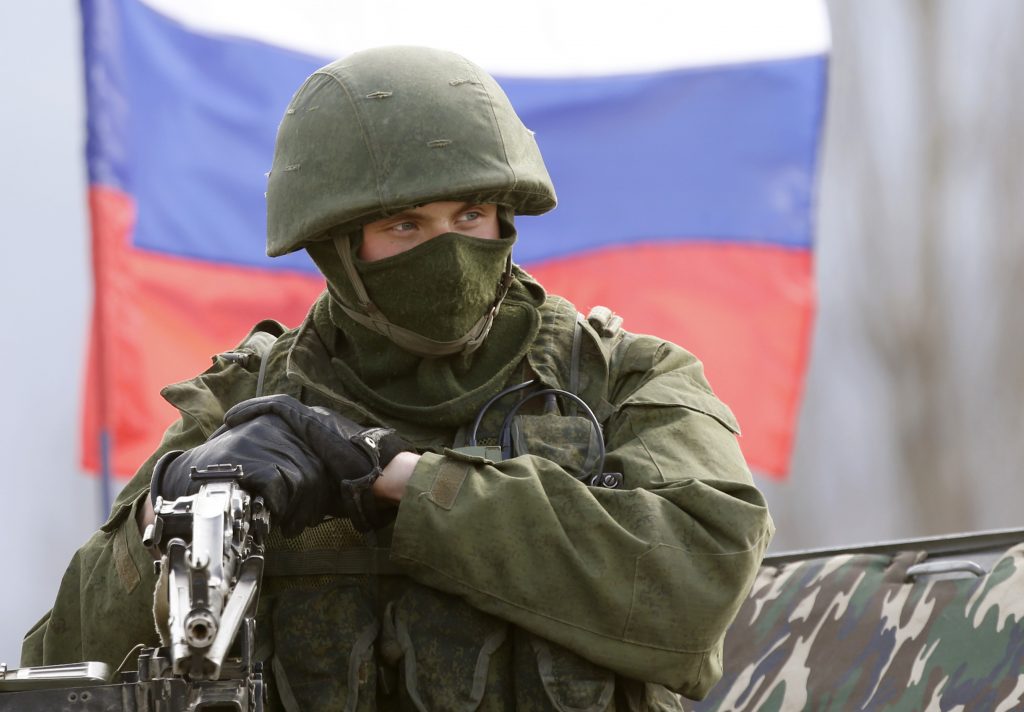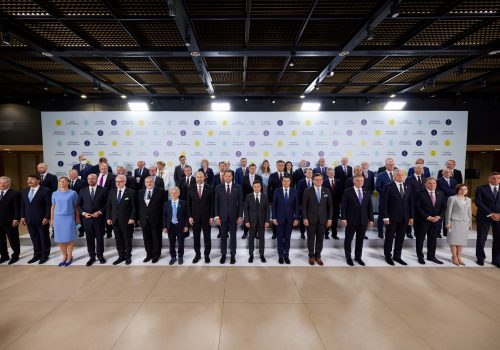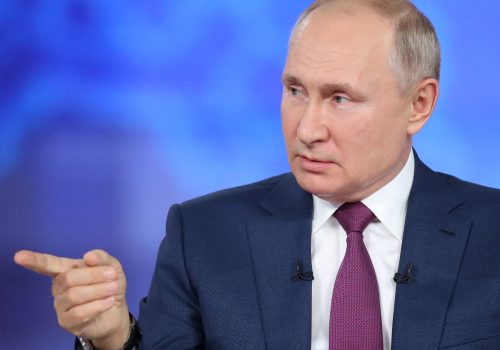On August 23, Ukraine hosted senior representatives from more the 40 countries at the inaugural Crimea Platform summit. This diplomatic initiative aims to put the Russian occupation of Ukraine’s Crimean peninsula firmly back on the global agenda. However, while Kyiv works to focus international attention on occupied Crimea, another region of Ukraine remains particularly vulnerable to Moscow’s machinations.
Bessarabia is a highly multicultural region in southwestern Ukraine’s Odesa Oblast that shares many of the characteristics which helped facilitate the 2014 Kremlin takeover of Crimea. Ethnically diverse and physically isolated from the rest of Ukraine, Bessarabia is a largely Russian-speaking region of around 600,000 where Kremlin media enjoys unusually high audience penetration and street-level identity issues are colored by an undercurrent of Russophile sentiment dating back to the czarist era.
Meanwhile, the nearby Kremlin-controlled Transnistria separatist republic in neighboring Moldova boasts a significant Russian military presence. These Russian troops could potentially repeat the role of the “little green men” who seized Crimea for Vladimir Putin seven years ago.
Today’s Bessarabia is geographically bounded by the endpoints of two great rivers, the Dniester in the north and the Danube to the south, which also forms the boundary separating Ukraine from EU member state Romania. It is a physically stunning region with an abundance of fine farmland and Black Sea coastline. Unique tourist attractions include Vylkove in the Danube estuary, an understated Ukrainian version of Venice where the population travels primarily by boat through the canals that make up the town’s quaint streets.
This picturesque region has the potential to become a major national security headache. To prevent that from happening, Ukraine should learn the lessons of 2014 by dedicating attention and resources to Bessarabia to address vulnerabilities that could otherwise be exploited by the Kremlin in order to further undermine Ukrainian sovereignty and the country’s territorial integrity.
Stay updated
As the world watches the Russian invasion of Ukraine unfold, UkraineAlert delivers the best Atlantic Council expert insight and analysis on Ukraine twice a week directly to your inbox.
One key feature shared by Crimea and Bessarabia is isolation. In the years prior to the 2014 military takeover, traveling to Crimea from mainland Ukraine was far from straightforward. The roads south into Crimea were generally in terrible condition, while the overnight train from Kyiv was uncomfortable and the journey overly long. This meant that flights were the only realistic option, but tickets were often expensive with few flights scheduled. In practice, it was often cheaper and more convenient for Ukrainians to spend their holidays in Turkey.
This disconnect from mainland Ukraine directly contributed to reduced social contact and limited Crimea’s participation in the national identity-building processes that took place elsewhere in Ukraine following independence. From 1991 onward, the Kremlin worked to widen and exploit this informal divide, patiently laying the foundations for the eventual military seizure of the peninsula in spring 2014.
Like Crimea, Bessarabia is physically remote with strikingly poor logistical connections to the rest of Ukraine. A single bridge with one lane in each direction connects the region to the other half of Odesa Oblast over the Dniester River, while a second connecting route by road must pass through Moldovan territory in the Dniester estuary, coming just a few dozen kilometers from the Russian-occupied region of Transnistria.
While a number of Bessarabian cities like Izmail lie along the Danube River, no bridge or ferry connects them directly to Romania or the nearest Romanian city of Tulcea, despite it being close enough to be clearly visible at night. Instead, it currently takes over three hours traveling by road via Moldova to cross the Danube and reach Tulcea.
A new ferry connecting Orlivka (located about 45 minutes by car west of Izmail) to Isaccea in Romania was launched in August 2020 and is a promising start to closer integration. However, the journey is still approximately two hours. In the other direction, residents of Izmail must spend close to 17 hours on a train in order to reach Kyiv via a single rail connection.
Whereas Crimea prior to 2014 had a predominantly ethnic Russian population with Ukrainian and Crimean Tatar minorities, today’s Bessarabia is far more of a patchwork of different ethnic groups. Nevertheless, it is worth noting that the region does not feature an ethnic Ukrainian majority. Officially, ethnic Ukrainians makes up around 40 percent of the Bessarabian population, along with ethnic Russians (20 percent), Bulgarians (20 percent), Moldovans (13 percent) and a number of smaller ethnic groups. Many of these communities form majorities in culturally distinctive villages that dot the region.
One of the factors uniting the different communities of Bessarabia is an historical connection to the imperial Russian conquests of the late eighteenth and early nineteenth centuries. Russian remains the lingua franca of everyday life throughout the region. It is common to encounter banned Russian TV channels being beamed into homes and cafes, often from signals originating not only in Transnistria but also Romania and Moldova. At the same time, Ukrainian-language media lacks both infrastructure and audience.
Eurasia Center events

While significant attention has been paid to addressing the impact of Russia’s intervention in Crimea and eastern Ukraine, many of the same latent vulnerabilities remain unaddressed in Bessarabia. The international community has robustly engaged in efforts to support communities in eastern Ukraine living close to the line of contact, while numerous stakeholder groups are also working to address issues related to the ongoing Russian occupation of Crimea and eastern Ukraine. Similar initiatives are required in relation to Bessarabia.
An effort should be made to conduct comprehensive social and political research across Bessarabia to identify potential weaknesses that could be exploited by the Kremlin. Much more must be done to increase connectivity between the region and the rest of Ukraine. This should include targeted investment in a major infrastructure upgrade, along with efforts to promote tourism and attract more Ukrainian visitors to Bessarabia. Current investments projects announced by the government through the “Big Construction” program include only a few schools, stadiums, and a swimming pool.
Ukrainian President Volodymyr Zelenskyy’s recent visit to the tiny but strategically located Snake Island (Zmiyiniy Ostriv), which lies in the Black Sea off the coast of Bessarabia, was a positive signal indicating that the authorities in Kyiv recognize the need to pay greater attention to the security of the region as a whole. While on Snake Island, Zelenskyy observed military exercises designed to repel a Kremlin attempt to capture the island. With the undeclared war between Russia and Ukraine currently in its eighth year, few would be prepared to entirely rule out the possibility of such an attack. Indeed, with Putin apparently intent on continuing his efforts to destabilize Ukraine from within, Bessarabia represents a potentially attractive target.
Earlier attempts to stir up pro-Kremlin separatism in the region fell flat in 2015, but there is no room for complacency. Instead, the international community should consider identifying Bessarabia as a priority security issue and begin offering Ukraine greater assistance as the country seeks to ward off the danger of the region becoming a new front in Russia’s ongoing hybrid war.
Michael Druckman is resident program director for Ukraine at the International Republican Institute.
Further reading
The views expressed in UkraineAlert are solely those of the authors and do not necessarily reflect the views of the Atlantic Council, its staff, or its supporters.

The Eurasia Center’s mission is to enhance transatlantic cooperation in promoting stability, democratic values, and prosperity in Eurasia, from Eastern Europe and Turkey in the West to the Caucasus, Russia, and Central Asia in the East.
Follow us on social media
and support our work
Image: One of Russia's "Little Green Men" (soldiers without identifying insignia) pictured during the spring 2014 Kremlin seizure of Crimea. (REUTERS/Vasily Fedosenko)





